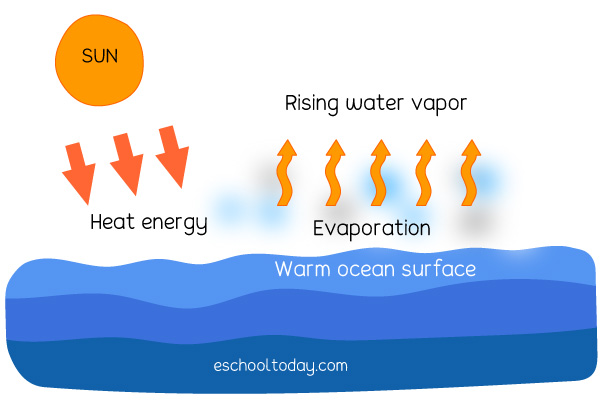- The Water Cycle
Evaporation
Evaporation is simply the process by which liquid turns into a gas. Water (a liquid) turns into vapor (a gas) when heat energy is applied to raise its temperature to 100°C (212°F). Water in the liquid state is a compound, and the heat breaks up the bonds into water molecules, which is gaseous.

Water covers about 70% of the entire surface of the earth. It means that there is a massive surface area that helps with the absorption of the sun’s heat. It is believed that about 90% of moisture in the atmosphere comes from the oceans, seas, and lakes.
The amount of moisture that gets into the atmosphere via evaporation over the oceans is more than the precipitation it receives, and the evaporation of moisture on land is less than the precipitation it receives.
Sometimes ice (solid particles) can turn directly into vapor without first turning into liquid. This phenomenon is common in arid climates, where dry winds hitting snow sucks up the moisture, changing the snow directly into vapor. This process is called sublimation.
Note that about 10% of the moisture in the atmosphere is provided by the process of transpiration (evapotranspiration)
IMPORTANT: From the above, you can see how important the sun is in the water cycle. Without the sun, there will be no water cycle because the entire cycle is driven by the sun’s heat (energy
